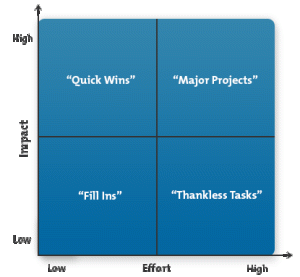“Time waits for no one,” so the old adage goes. A careful evaluation of our life shows that time continues to move forward – unstoppable – regardless of how we respond to this change.
Knowing this concept about time, we can design our lives in order to maximize what we can do and how we live without letting time pass us by, leaving us helpless and dissatisfied. The best way to take control of time is through management.
By managing our time, we are able to perform the things that are expected of us effectively. Through time management, we can strike a balance between all the different roles we have to play – student, parent, child, friend, lover, professional, etc. Proper time management will have great impacts not only on our performance, but also on our well-being.
Thus, as we progress in life and take on different roles, understanding time management and making use of this skill is an imperative for achieving success.
MindTools.com gives us a way to assess the level of our time management skill and provides tools that can help us excel. Fifteen (15) statements are provided and a respondent is to choose which answer best describes him/her. After answering all questions, a score is calculated and based on the result, the respondent’s time management ability is assessed.
There are five different tools for time management as provided in this article. These are: Goal Setting, Prioritization, Managing Interruptions, Procrastination, and Scheduling.
Goal Setting provides a means for one to have a clear picture of the direction which his career or life should go. It could result to motivation, build self-confidence, and be measure of achievement.
On Prioritization, an Action Priority Matrix (Figure 1) would be a useful tool to show how to prioritize different tasks and activities in order to maximize the use of one’s time, energy, and talents.
In the advent of technological advances which has resulted to ease of communication and access to social media, it is very easy to be interrupted from fulfilling the goals which have been set and to maintain the assigned level of priority for certain tasks. The 4D’s to Managing Interruptions are Decide, Defer, Discourage, and Do.
Putting off things which need to be done in favor of doing other more gratifying things, or simply Procrastinating can prevent you from meeting your goals and managing your time properly. Three steps suggested to overcome procrastination are: (1) recognize that you are procrastinating, (2) work out why you are procrastinating, and (3) adopt anti-procrastination strategies.
A vital tool for time management is Scheduling. This tool can be used to maximize effectiveness and reduce stress levels. Through scheduling of personal and professional goals, a work-life balance may be achieved.
References:
http://www.mindtools.com/pages/article/newHTE_88.htm “How Good is Your Time Management?” (Accessed: 17 May 2015)
http://www.mindtools.com/page6.html “Personal Goal Setting” (Accessed: 22 May 2015)
http://www.mindtools.com/pages/article/newHTE_95.htm “The Action Priority Matrix” (Accessed 22 May 2015)
http://www.mindtools.com/pages/article/newHTE_96.htm “Overcoming Procrastination” (Accessed 24 May 2015)
http://www.mindtools.com/pages/article/newHTE_07.htm “Effective Scheduling” (Accessed 24 May 2015)
http://www.time-management-success.com/managing-interruptions.html “The 4D Formula For Managing Interruptions” (Accessed 22 May 2015)

